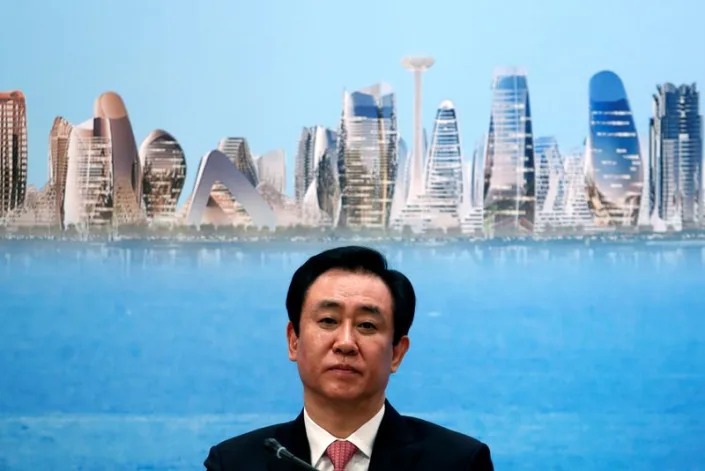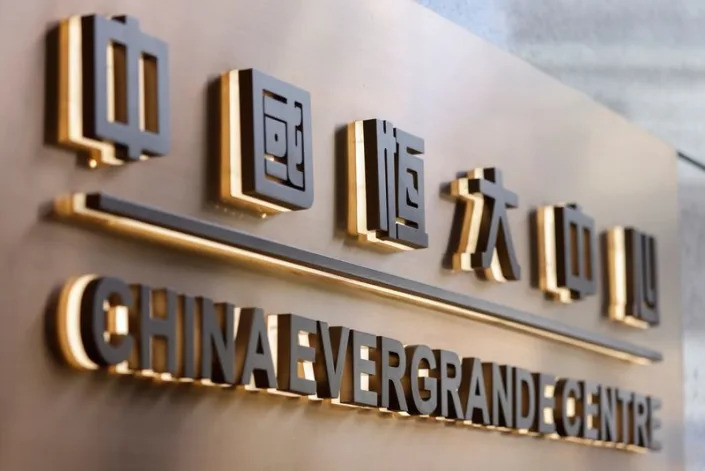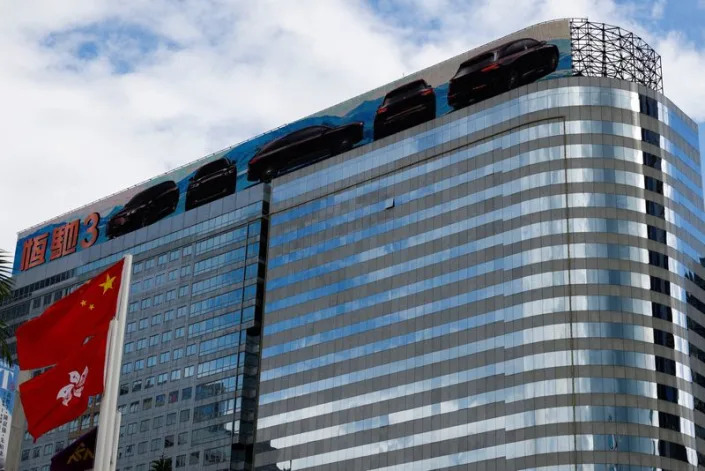
Annalisa Merelli
Wed, November 2, 2022
CVS and Walgreens have agreed to a $10 billion settlement with state and local governments accusing them of mishandling prescription painkillers and fueling the US opioid crisis. They each would pay roughly $5 billion. Walmart, too, is reportedly ready to settle, to the tune of $3 billion.
The settlement amounts still require formal approval, but they’re a good indication of how much the pharmacy chains will have to pay. Earlier this year, the Sackler family—the owners of Purdue Pharma, the manufacturer of the blockbuster opioid drug OxyContin—reached a $6 billion settlement agreement after a federal judge rejected an initial settlement of $4.5 billion.
The latest round of settlements all but ends the big lawsuits brought against a dozen companies accused of precipitating what is arguably the worst addiction epidemic in American history. Drug distributor McKesson settled for the largest amount ($7.4 billion). Overall, the settlements add up to $53 billion.
datawrapper-chart-B4WDm
That’s still less than $206 billion paid by tobacco companies sued over the health costs of treating smoking-related illnesses—and a tiny fraction of the estimated $1 trillion a year that the opioid crisis is currently costing the US.
The lawsuits might be over, but the opioid crisis is worse than ever
A combination of the growing numbers of people buying illegal opioids, and the ubiquity of fentanyl have driven up overdose deaths in the US to unprecedented levels. In 2020, 92,000 people died of drug overdoses. Opioids accounted for nearly 70,000 of those, up from 50,000 in 2019. Estimates for 2021 put overall overdose deaths at 103,000, with at least 82,000 tied to opioids.
datawrapper-chart-t1HkK
The costs of such a monumental crisis are hard to estimate. The most recent estimate from the Centers for Disease Control and Prevention (CDC) says the crisis cost over $1 trillion a year, between the loss of life, expenses for medical treatments, and spending on criminal justice.
But that cost estimate is from 2017, when only 2 million Americans had an opioid-use disorder, and 48,000 died from an overdose because of it. In 2021, the number of patients with an opioid addiction is at least 3 million, and deaths reached 82,000. This makes the current epidemic at least 50% larger than it was in 2017, which would bring up the yearly cost estimate to $1.5 trillion, in line with recent cost estimates from the US Congress Joint Economic Committee.
That would mean the total amount paid in the settlements cover about 0.3% of the bill for one year only. Altogether, the 12 major companies involved in the settlements had total revenues of $1.8 trillion in 2021.
Quartz
CVS, Walgreens announce opioid settlements totaling $10B
GEOFF MULVIHILL
Wed, November 2, 2022
The two largest U.S. pharmacy chains, CVS Health and Walgreen Co., announced agreements in principle Wednesday to pay about $5 billion each to settle lawsuits nationwide over the toll of opioids, and a lawyer said Walmart, a third pharmacy behemoth, is in discussions for a deal.
The prospective settlements are part of a shift in the legal landscape surrounding the opioid epidemic. Instead of suspense over whether companies in the drug industry would be held to account through trials or settlements, the big question is now how their money will be used and whether it will make a difference in fighting a crisis that has only intensified.
The deals, if completed, would end thousands of lawsuits in which governments claimed pharmacies filled prescriptions they should have flagged as inappropriate. With settlements already proposed or finalized between some of the biggest drugmakers and distribution companies, the recent developments could be the among the last multibillion-dollar settlements to be announced.
They also would bring the total value of all settlements to more than $50 billion, with most of it required to be used by state and local governments to combat opioids, which have been linked to more than 500,000 deaths in the U.S. over the last two decades.
“It's one more culprit of the overdose crisis that is having to pay their dues," said Courtney Gary-Allen, organizing director of the Maine Recovery Advocacy Project. "Average Americans have been paying it for a long time."
Gary-Allen, who is a member of a council that will help determine how Maine uses its opioid settlement funds, said more money to address the problem will help. In her state, she said, the needs include more beds for medical detox and for treatment.
Neither Woonsocket, Rhode Island-based CVS nor Deerfield, Illinois-based Walgreens is admitting wrongdoing.

The plans spring from mediation involving a group of state attorneys general. Before they move ahead, state and then local governments would need to sign on. So far, the detailed, formal deals have not been presented to the government entities so they can decide whether to join.
Under the tentative plans, CVS would pay $4.9 billion to local governments and about $130 million to Native American tribes over a decade. Walgreens would pay $4.8 billion to governments and $155 million to tribes over 15 years. The exact amount depends on how many governments join the deals.
Both noted they have been addressing the crisis through such measures as starting educational programs and installing safe disposal units for drugs in stores and police departments. And both said the settlements would allow them to help while staying focused on their business.
“We are pleased to resolve these longstanding claims and putting them behind us is in the best interest of all parties, as well as our customers, colleagues and shareholders,” Thomas Moriarty, CVS chief policy officer and general counsel, said in a statement.
Walgreens said in a statement: “As one of the largest pharmacy chains in the nation, we remain committed to being a part of the solution, and this settlement framework will allow us to keep our focus on the health and wellbeing of our customers and patients, while making positive contributions to address the opioid crisis,” Walgreens said in a statement.
Paul Geller, a lawyer for governments in the lawsuits, said talks with Walmart continue. Walmart representatives would not comment Wednesday.
“These agreements will be the first resolutions reached with pharmacy chains and will equip communities across the country with the much-needed tools to fight back against this epidemic and bring about tangible, positive change,” lawyers for local governments said in a statement. “In addition to payments totaling billions of dollars, these companies have committed to making significant improvements to their dispensing practices to help reduce addiction moving forward.”
If these settlements are completed, they would leave mostly smaller drug industry players as defendants in lawsuits. Just this week, a group of mostly regional pharmacy chains sent to a judge, who is overseeing federal litigation, information about claims they face, a possible precursor to scheduling trials or mediating settlements involving some of those firms.
“One by one, we are holding every player in the addiction industry accountable for the millions of lives lost or devastated by the opioid epidemic,” Connecticut Attorney General William Tong said in a statement. “The companies that helped to create and fuel this crisis must commit to changing their businesses practices, and to providing the resources needed for treatment, prevention and recovery.”
Most of the nation's opioid overdose deaths initially involved prescription drugs. As governments, doctors and companies took steps to make them harder to abuse and obtain, people addicted to them increasingly switched to heroin, which proved more deadly.

In recent years, opioid deaths have soared to record levels around 80,000 a year. Most of those deaths involve illicitly produced version of the powerful lab-made drug fentanyl, which is appearing throughout the U.S. supply of illegal drugs.
Only a handful of opioid settlements have had bigger dollar figures than the CVS plan. Distributors AmerisourceBergen, Cardinal Health and McKesson this year finalized a combined settlement worth $21 billion, and drugmaker Johnson & Johnson finalized a $5 billion deal.
Purdue Pharma, the maker of OxyContin, and members of the Sackler family who own the company have a proposed settlement that would involve up to $6 billion in cash, plus the value of the company, which would be turned into a new entity with its profits used to combat the epidemic. That plan has been put on hold by a court.
___
Associated Press writer Tom Murphy in Indianapolis contributed to this report.











